By German Tirado, August 19 2025
Introduction: The Seductive Myth of Content-First Growth

Marketers are often told that “content marketing builds trust” and that “content is the best long-term growth strategy.” The idea is seductive because it promises a low-cost, controllable way to attract and retain customers. Write insightful blogs, publish case studies, post on LinkedIn, and so the myth goes buyers will naturally form loyal relationships with your brand.
But here’s the reality: content alone lacks the reach and frequency required for brand growth. The data shows that most buyers are not actively in the market at any given time up to 95% of B2B buyers are out-of-market right now [3]. That means the majority of your carefully crafted content never reaches the people who will eventually drive your sales. Worse, even when content is consumed, it rarely provides the repeated exposures needed to refresh memory structures that make a brand mentally available [1][2].
True growth comes from building mental availability (the likelihood that your brand is thought of in buying situations) and physical availability (the ease with which your brand can be purchased). Both are strengthened by broad reach, repeated frequency, and distinctive brand assets [5]. Content marketing, by contrast, tends to focus narrowly on existing audiences, current buyers, or rational persuasion, leaving behind the light buyers and non-buyers who actually fuel most of a brand’s sales [1].
This article will show why content marketing alone is not enough for growth, and why effective strategies must combine content with sophisticated mass marketing, distinctive assets, and Category Entry Points (CEPs) [4]. By understanding how reach, frequency, and memory building work together, marketers can stop chasing content myths and start building brands that grow.
Table of Contents
Introduction: The Seductive Myth of Content-First Growth
Why Buyers Don’t Think About You Very Often
The Core Weaknesses of Content-Only Marketing
Evidence: CEPs and Brand Growth
The Laws of Growth: Reach + Frequency = Penetration
Practical Action Steps for Marketers
Metrics to Track for True Growth
Conclusion: Why Content Alone Can’t Deliver Brand Growth
Frequently Asked Questions (FAQs)
Works Cited
Why Buyers Don’t Think About You Very Often

Most of your potential buyers are not in the market today. Research across B2B categories shows that around 95% of buyers are out-of-market at any given time [3]. This means that when you release a piece of content, only a tiny fraction of your audience is both exposed to it and actively shopping for a solution.
Advertising works differently. Its power lies not in triggering immediate action, but in building memory structures that surface when buyers enter the market later. Reach and frequency ensure that your brand is mentally available when the need arises [1][3]. Content, without that exposure mechanism, usually fails to create enough mental “nodes” to be retrieved when it matters.
The Three Core Weaknesses of Content-Only Marketing

1. Limited Reach
Most content distribution happens through email lists, organic SEO, or social followers. These audiences are almost always your existing customer base or fans the very people who already know you. Growth, however, comes from reaching light buyers and non-buyers. These groups represent the majority of category sales [1]. Content alone cannot reliably reach them at scale.
2. Lack of Frequency
A blog post might be published once. A whitepaper may circulate for a few weeks. But memory structures decay quickly without repetition [2]. To sustain salience, brands need continuous, repeated exposure across months and years. Content, unless supported by paid distribution, rarely meets this requirement.
3. Narrow Contexts (CEPs Gap)
Buyers don’t think “I want brand X because I read a blog about it.” They think:
“When budgets reset in January, which tools can I justify?”
“When my software crashes during a client meeting, who can help me?”
These are Category Entry Points (CEPs)—cues that trigger memory retrieval [4]. Bigger brands dominate because they are linked to a wider set of CEPs. Content marketing often emphasizes rational persuasion (“our product is better”), but rarely maps across diverse CEPs with the reach needed to refresh them.
Evidence: CEPs and Brand Growth

Research on B2B business insurance shows the pattern clearly. Larger brands like State Farm are associated with more CEPs (“when I need quick service,” “when compliance rules change,” “when renewing annually”) compared to smaller brands. Customers with fewer CEP links are more likely to defect to a competitor [4].
Every additional CEP linked to a brand reduces churn and increases the odds of being chosen. But building CEP linkages requires wide media reach and repeated co-presentation of the brand alongside these buying cues not just a blog that only a few buyers ever see.
The Laws of Growth: Reach + Frequency = Penetration

The Double Jeopardy Law shows that smaller brands suffer not because they are “unloved,” but because they have fewer buyers and slightly less loyalty from those buyers [1]. The way out is not by deepening trust through content—it’s by gaining penetration through broader reach.
Reach ensures new buyers know your brand exists.
Frequency ensures old exposures don’t fade.
Distinctive Assets ensure all those exposures add up and get attributed to your brand [5].
Content may support this process—but it cannot substitute for it.
Practical Action Steps for Marketers

Invest in Broad-Reach Media
Use TV, online video, outdoor, and digital campaigns optimized for reach, not just clicks. The objective is to expose your brand to light and non-buyers repeatedly.
Use Content as Support, Not the Core
Blogs, webinars, and case studies can reinforce your positioning, but only after broad advertising has built salience. Content is depth, not scale.
Rotate Messaging Across CEPs
Don’t just talk about one “reason to buy.” Across a year, message different contexts: “when teams work remotely,” “when deadlines loom,” “when budgets shrink.” Each execution should link your brand to one clear CEP [4].
Refresh Distinctive Assets
Make sure every exposure—ads, blogs, videos—features your brand cues: logo, colors, sonic signature. Distinctive assets allow all impressions (whether paid or organic) to accumulate [5].
Measure Mental Availability, Not Just Clicks
Track how often buyers link your brand to CEPs in research studies. Share of search, brand recall surveys, and Distinctive Asset Salience scores are better growth indicators than vanity metrics like blog views.
Metrics to Track for True Growth

Category Penetration: % of all buyers purchasing your brand annually.
Mental Market Share: share of category buyers who recall your brand first.
CEPs Coverage: % of buyers who associate your brand with multiple buying situations.
Distinctive Asset Salience: recognition rate of brand elements.
Market Share Growth: the ultimate test of effectiveness.
Conclusion: Why Content Alone Can’t Deliver Brand Growth
Content marketing has value, but the evidence is clear it cannot, on its own, deliver the brand growth marketers are chasing. Blogs, whitepapers, and social posts may help with thought leadership or provide rational arguments, but they lack the reach, frequency, and repetition required to build mental availability at scale [1][2].
Growth comes not from persuading a small group of readers, but from reaching all category buyers, especially the light and non-buyers who make up the majority of sales [1]. This is why strategies built solely on content marketing underperform: they fail to expose the brand widely enough, often ignore Category Entry Points (CEPs), and rarely use distinctive brand assets consistently enough to refresh memory structures [4][5].
The world’s largest and most successful brands grow because they:
Reach buyers broadly through mass marketing, not just niche content.
Refresh memory structures frequently across different buying situations.
Link themselves to multiple CEPs, ensuring they are recalled “when budgets reset,” “when deadlines loom,” or “when software crashes.”
Leverage distinctive assets, logos, colors, sounds that allow all exposures to add up over time [5].
Content marketing can still play a useful role. It can support broad advertising campaigns, provide depth for buyers who are already in the market, and help explain solutions in detail. But it should never be mistaken as the engine of growth. Without scale and repetition, even the best content risks becoming invisible.
The bottom line is this: content alone lacks the reach or frequency to grow brands. Real growth requires an evidence-based strategy that prioritizes mental availability, physical availability, reach, frequency, Category Entry Points, and distinctive brand assets. When content is integrated into that framework—rather than relied upon as a silver bullet—it becomes far more effective in driving long-term sales and market share growth [1][2][3][4][5].
Frequently Asked Questions (FAQs)
1. Why isn’t content marketing enough for brand growth?
Because content alone lacks the reach and frequency required to build mental availability. Most buyers are out-of-market (around 95% in B2B) at any given time, meaning content rarely reaches them or refreshes memory structures [3].
2. What is the role of reach and frequency in marketing?
Reach ensures that your brand is exposed to as many category buyers as possible, while frequency refreshes memory structures so the brand is recalled in future buying situations. Together, they are essential for penetration growth [1][2].
3. Can content marketing still be useful?
Yes. Content can support broad advertising campaigns by providing depth and rational explanations once salience has been built. But it cannot replace the role of mass marketing, distinctive assets, and CEP coverage in driving growth [4][5].
4. What are Category Entry Points (CEPs) and why do they matter?
CEPs are the cues buyers use when entering a category, such as “when budgets reset” or “when deadlines loom.” Brands that are linked to more CEPs are recalled more often and chosen more frequently. Content marketing typically struggles to build CEP coverage at scale [4].
5. How do distinctive brand assets support growth?
Distinctive brand assets—logos, colors, sounds, taglines—allow all exposures (ads, blogs, social posts) to accumulate in memory and be attributed to your brand. Without them, even frequent exposures may not register as belonging to you [5].
6. What should marketers prioritize instead of relying only on content?
Marketers should focus on:
Broad-reach advertising to light and non-buyers.
Consistent repetition to refresh memories.
Linking the brand to multiple CEPs.
Using distinctive assets across all channels.
Content marketing can then be layered in as a support tactic.
Works cited
[1] Sharp, Byron. How Brands Grow: Part 1. Oxford University Press, 2010.
[2] Sharp, Byron. How Brands Grow: Part 2. Oxford University Press, 2015.
[3] Dawes, John. Advertising Effectiveness and the 95-5 Rule: Most B2B Buyers Are Not in the Market Right Now. Ehrenberg-Bass Institute for Marketing Science, 2021.
[4] Romaniuk, Jenni. Category Entry Points in a Business-to-Business (B2B) World. Ehrenberg-Bass Institute for Marketing Science, 2022.
[5] Romaniuk, Jenni, and Byron Sharp. Building Distinctive Brand Assets. Oxford University Press, 2018.
Address
Phone: 725-240-6870
Email : [email protected]
Address : 6440 Sky Pointe Dr. #140-341 Las Vegas, NV 89131
Artificial Intelligence
Marketing & Branding
Marketing & Branding
©2025 Max Digital Edge | All Rights Reserved
